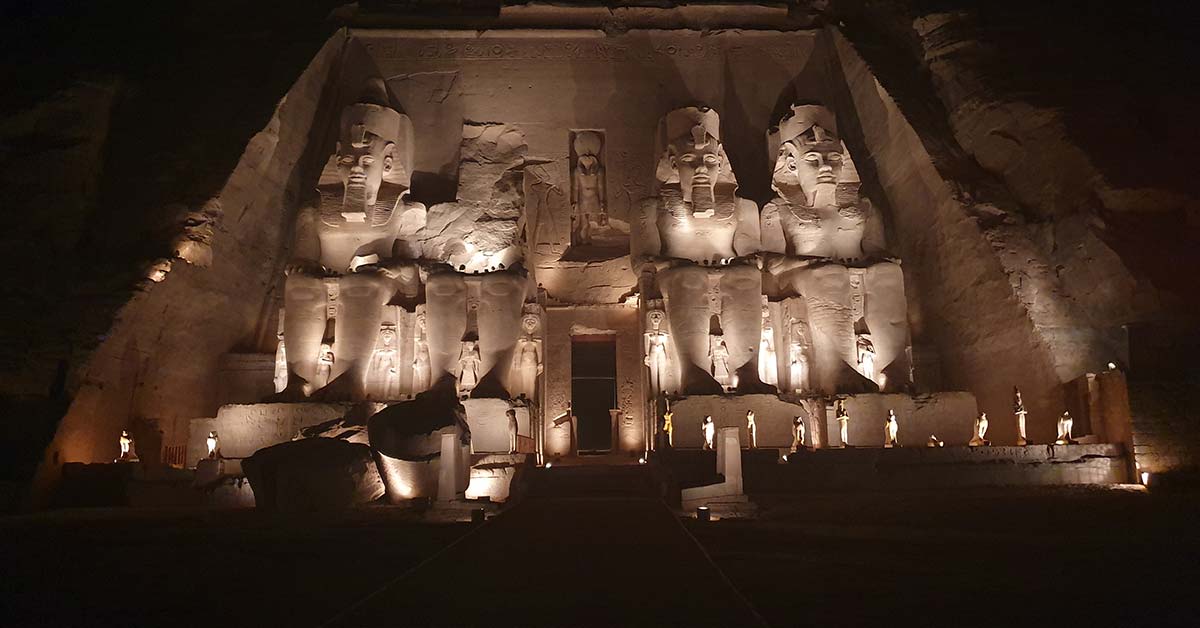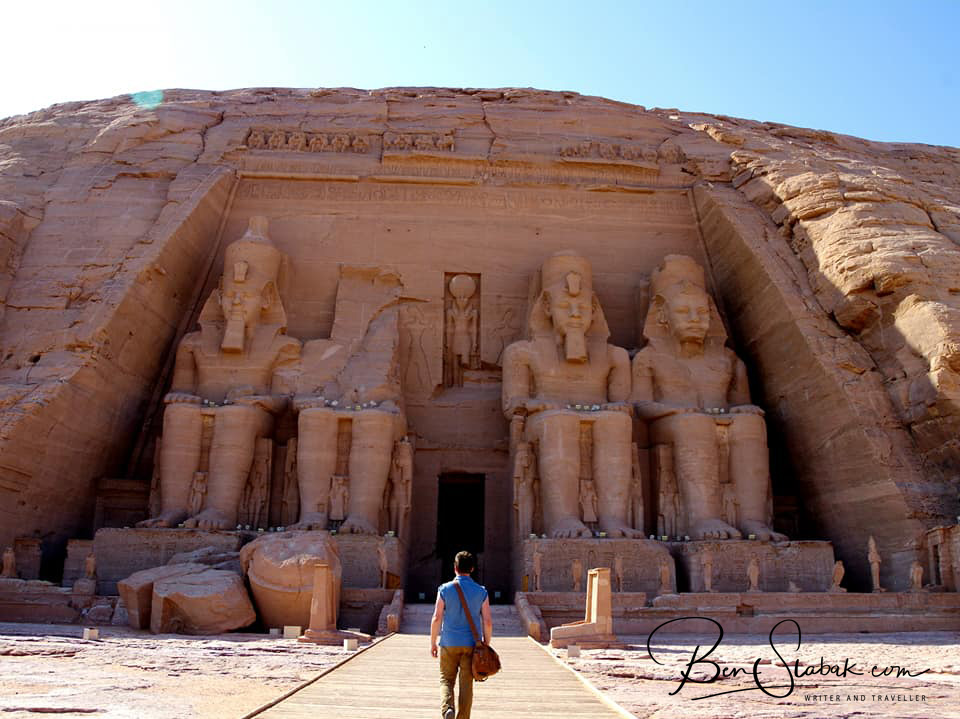
Date
A spectacular solar alignment event
I returned to Egypt in October 2019, following a very successful appearance at the New York Comic Con, for the first time since 2009. I had planned to visit sooner, but for a variety of reasons it never eventuated and this time around I took the opportunity on my way back from New York.
I visited Abu Simbel at the tail end of my trip in Egypt, where I spent about two weeks catching up with friends and visiting many sites, such as the Pyramid of Senwosret II at Al Lahoun and the Bent Pyramid at Dahshur, both of which had just recently opened to the public for the very first time.

I had read about the Sun Festival previously and was keen to witness the solar alignment event whereby the rising sun aligns perfectly to illuminate the inner sanctum of the usually dark temple interior. An impressive feat of engineering has ensured that the temple’s inner statues of Ramesses the Great, the sun god Ra, and the king of the gods Amun are illuminated for a brief period, while the statue of Ptah, the god of darkness, remains in the shadow.
A bi-annual event, the October 22 solar alignment purportedly coincides with Ramesses’ birthday, whereas the February 22 alignment coincides with his ascension to the throne. I should add that there is no actual evidence to corroborate these. Nevertheless, the Sun Festival is celebrated to this day and has become increasingly popular in recent years.
When the temple of Ramses II was originally built, the Sun Festival was celebrated a day earlier on February 21 and October 21 respectively, however with the relocation of the temple in the 1960s to higher ground due to the construction of the Aswan Dam and the eventually flooding that would follow, the solar alignment now takes place a day later as a result.
I arrived in Abu Simbel the night before which I felt was a better way to experience the event since numerous tours arrive in the morning and from what I heard it tends to become quite hectic. This allowed me not only to experience the magnificent temples of Ramesses II and queen Nefertari (built 1264-1244 BC) uninterrupted, having the site to myself for almost an hour, but also ensure a spot in the innermost chamber the following morning by arriving sufficiently early before the tours started arriving from Aswan.
Sure enough, when I arrived at the site at 3am the following morning, the line consisted of only several visitors. It wasn’t long though before the line started growing, reaching into the thousands in a matter of hours.
Around 4:30am we entered the grounds and moved towards the Great Temple, which we entered shortly after. The humidity inside was quite stifling as we awaited the sun to rise above the horizon but it did not appear to dampen anyone’s spirits, and certainly not mine. I was indeed very fortunate to have been situated in the inner most chamber as the first rays of the sun penetrated the length of the temple and illuminated the three statues.
It is a moment that leaves one awe-struck at the sheer ingenuity of the ancient Egyptians and their engineering skills.
We had to move fast to allow as many visitors as possible to witness the event, who had formed a line that snaked back towards the entrance of the complex. It indeed remains a popular event, both for international and local visitors, and it’s one that I can absolutely recommend, with a caveat – arrive early! 🙂


